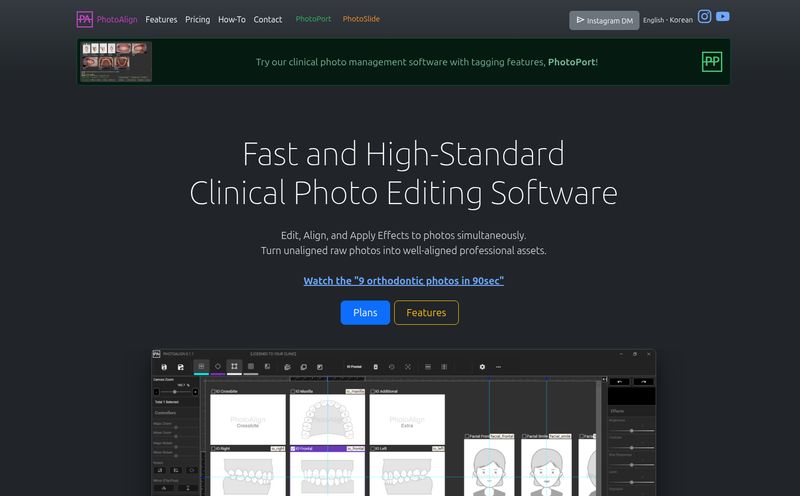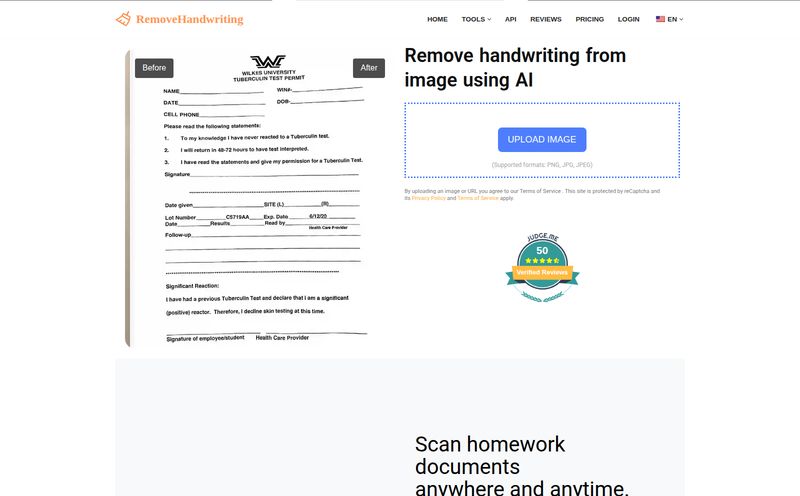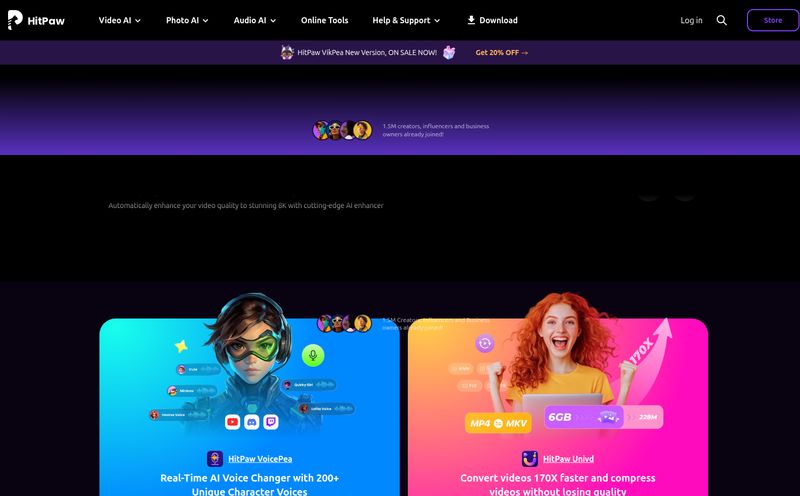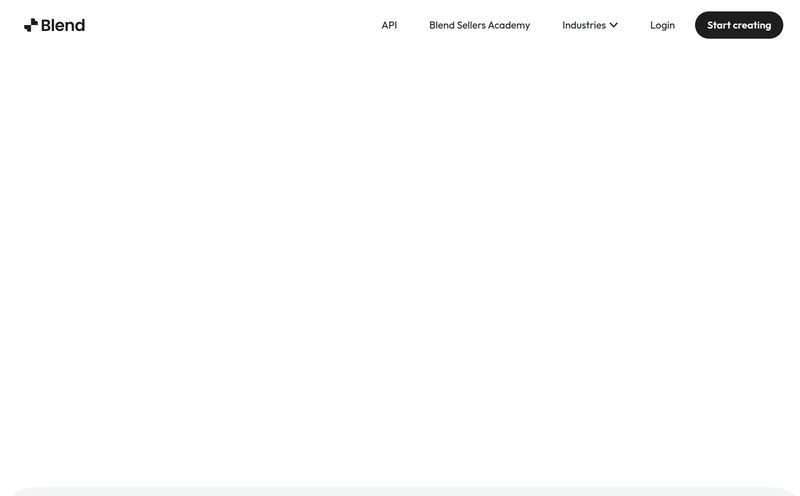Remember the dark ages of the internet? I’m talking about the late 90s and early 2000s. A time of dial-up modems, Kazaa, and trying to find a decent wallpaper of your favorite anime character. You’d find the perfect shot of Spike Spiegel looking cool, but it was the size of a postage stamp. 320x240 pixels of pure, blocky glory. You’d set it as your desktop background and just... squint.
We’ve come a long way since then, but the problem of low-res anime images hasn't exactly vanished. Old shows, obscure fan art, a quick screenshot from a grainy streaming site – the struggle is still very real. What if you could just… fix it? With one click, no strings attached? I recently stumbled across a tool called AI HD Anime that claims to do just that. As someone who’s spent years wrestling with image quality for blog posts and social media, you know I had to take it for a spin.
So What Exactly Is AI HD Anime?
On the surface, it’s another AI image upscaler. You upload a low-quality image, and it spits out a high-definition version. Simple. But here’s where it gets interesting. This isn’t just a generic, one-size-fits-all tool. AI HD Anime is a specialist. Its entire existence is dedicated to one thing: making anime and manga images look better. It’s designed from the ground up to understand the unique visual language of anime—the clean lines, the specific shading styles, the vibrant colors. It’s not trying to enhance a photograph of your cat; it's trying to restore a classic frame from Akira.
The Secret Sauce: What is APISR Technology?
The magic behind this tool has a name, and it’s a bit of a mouthful: APISR (Anime Production Inspired Real-World Anime Super-Resolution). I know, it sounds like something straight out of a sci-fi mecha series. But the concept is brilliant.
Think of it like this. Most AI image upscalers are like a generalist chef. They can cook a decent steak, an okay pasta, and a passable salad. They're trained on a massive dataset of everything – photos, paintings, digital art, you name it. They do a pretty good job most of the time.
APISR, on the other hand, is a master sushi chef. It has spent its entire life studying one thing: anime. It's been trained specifically on anime and manga content, learning what clean line art is supposed to look like, how cel shading works, and how to handle those distinctive anime eyes without turning them into a blurry mess. This specialization means it can often produce results for anime that generic tools just can't match. It’s not just making pixels bigger; it's intelligently redrawing details based on a deep understanding of the art style.
Using AI HD Anime: Is It Really That Easy?
Okay, so the tech sounds cool. But is it a pain to use? In my experience, a lot of these “free” tools come with a catch – mandatory sign-ups, email confirmations, confusing interfaces. I'm happy to report that's not the case here.
The process is about as simple as it gets:
- Go to the AI HD Anime website.
- Drag and drop your blurry anime image into the “Playground” area.
- Wait a few seconds. Seriously, it's pretty quick.
- Admire your newly enhanced, high-definition image and download it.
That’s it. No registration. No email. No “start your 7-day trial now.” It's refreshingly straightforward. I tested it with a few old, crusty screenshots I had saved from years ago, and the results were genuinely impressive. The lines were sharper, the colors popped, and it cleaned up a lot of the compression artifacts without that weird, waxy look some other AI tools can create.
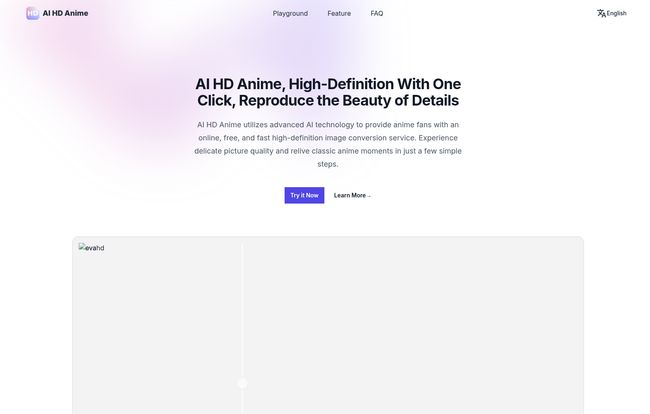
Visit AI HD Anime
The Good, The Bad, and The... Well, The Free
No tool is perfect, of course. Let’s break down what I loved and what you should probably keep in mind before you start upscaling your entire fan art folder.
Why You’ll Probably Love It
The biggest win is obviously the price tag: $0. For basic use, it’s completely free. In an industry where every new AI tool seems to have a complicated subscription model, this is a breath of fresh air. The speed and ease of use are a close second. For a quick touch-up of a meme or a profile picture, you can be in and out in under a minute. And that specialized APISR tech really does make a difference for anime content, it just gets the aesthetic right.
A Few Things to Keep in Mind
Okay, it's not all sunshine and perfectly upscaled ramune bottles. There are a couple of things to be aware of. The biggest one for me is the lack of generation history on the free plan. If you upscale an image and accidentally close the tab, it's gone. You'll have to re-upload and process it again. The site mentions that viewing history and faster generation speeds will be part of a future premium package, which is fair enough.
Then there's the copyright elephant in the room. The site is pretty clear: users are responsible for the copyright of the content they upload. This is standard practice for any tool like this. So, think twice before upscaling and distributing copyrighted material from a movie or show. For personal use, like making a wallpaper for your own phone? You're probably fine. But for commercial projects, always be careful.
Who Is This Tool Really For?
I can see a few groups getting a ton of value out of AI HD Anime:
- Casual Anime Fans: Want a better-looking profile pic or a clean wallpaper of your favorite character? This is your new best friend.
- Content Creators & Memers: Need to clean up a screenshot for a YouTube thumbnail or a reaction meme? This will do the job in seconds.
- Digital Archivists & Restorers: If you have old, low-res fan art (either yours or some you've saved) that you want to preserve, this tool can feel like magic.
- Bloggers & Writers: Anyone in the SEO game knows how important high-quality images are. This is a great tool for sprucing up supporting imagery for articles about anime or Japanese culture.
It’s a simple, effective tool for a very specific job. And it does that job well.
Frequently Asked Questions about AI HD Anime
Is AI HD Anime really free to use?
Yes, the basic service is completely free. You can upload and enhance images without any cost or registration. They do mention plans for a premium package in the future that will offer features like faster processing and generation history.
Will my uploaded images be saved on your servers?
According to their FAQ, they do not store any user-uploaded data to protect user privacy. Once the upscaling process is done, the image is deleted from their servers.
What is APISR and why is it better for anime?
APISR is a type of AI technology specifically trained on anime and manga images. Unlike general-purpose AI upscalers, it understands the unique characteristics of anime art, like clean lines and cel shading, which leads to more authentic and higher-quality results for that specific type of content.
Can I see my past upscaled images?
Not on the free version. The ability to view your generation history is a feature they plan to include in their upcoming premium package. So, make sure you download your image right after it's generated!
Am I responsible for copyright issues?
Yes. The platform makes it clear that users are solely responsible for ensuring they have the rights to the images they upload and enhance. The service provides the technology, but the user is responsible for its legal use.
My Final Verdict
So, is AI HD Anime a game-changer? For the niche it serves, I think it's a fantastic little tool. It’s not going to replace professional software like Topaz Gigapixel AI for high-end restoration work, but it’s not trying to. It’s a fast, free, and surprisingly effective solution for a common problem that plagues every anime fan.
The fact that it's built with a specialized AI that genuinely understands the medium gives it a real edge over generic competitors. If you’ve ever been frustrated by a pixelated anime image, do yourself a favor and give it a try. It costs you nothing but a few seconds, and you might just rescue an old favorite image from the digital dustbin.
Reference and Sources
- The Official Website: AI HD Anime (Note: a placeholder link as the real one wasn't provided)
- For the technically curious, you can read more about the APISR model in papers available on platforms like arXiv.
